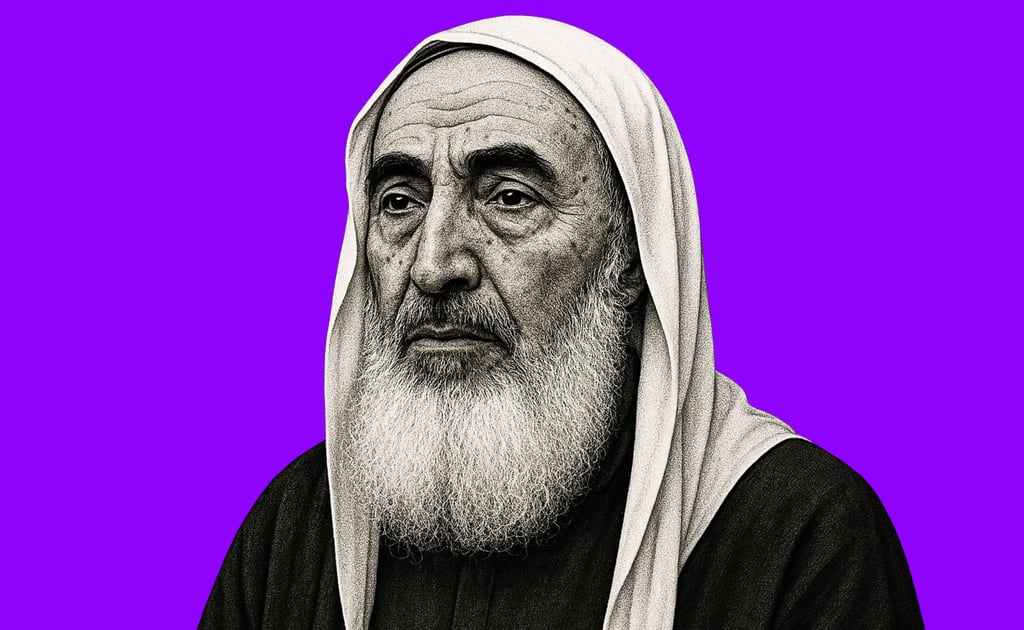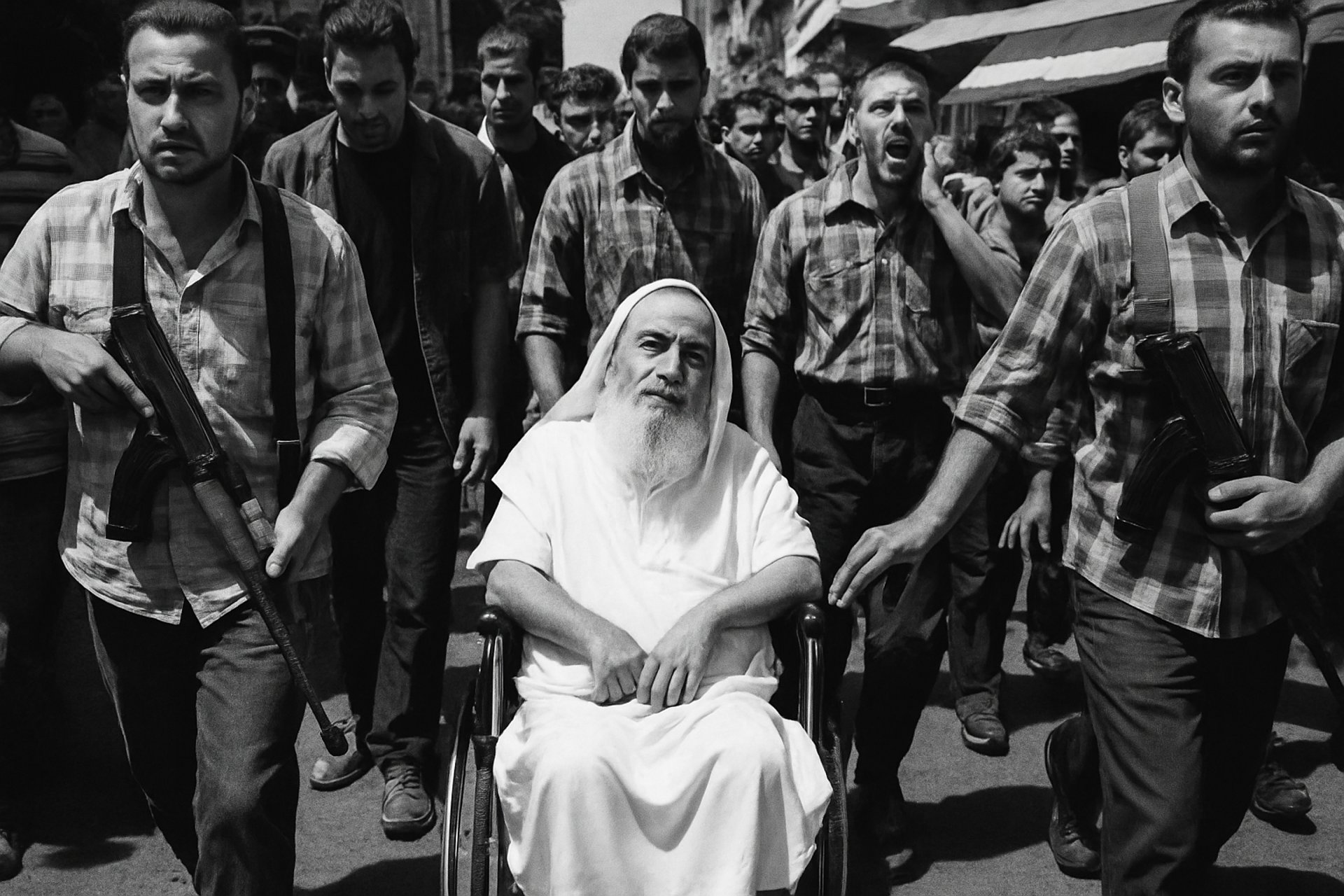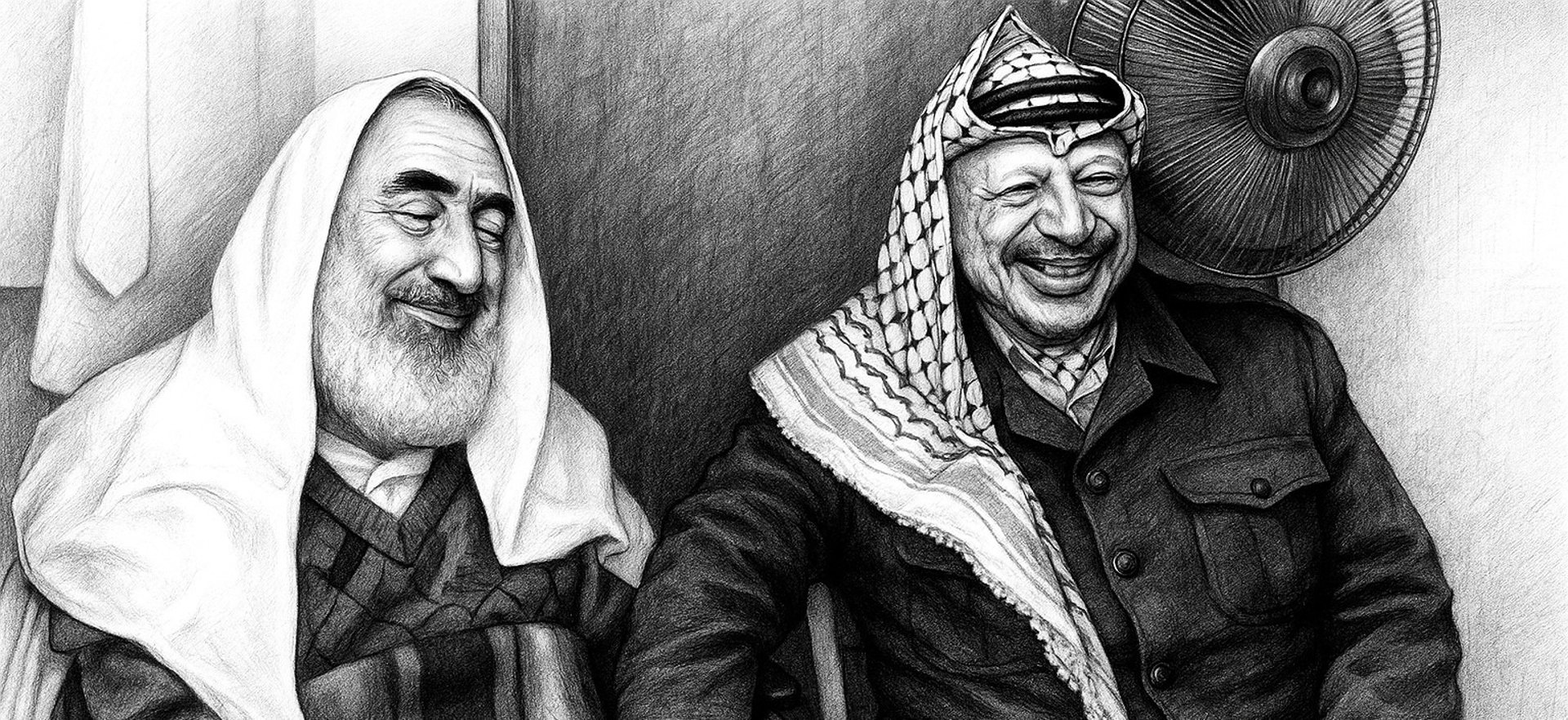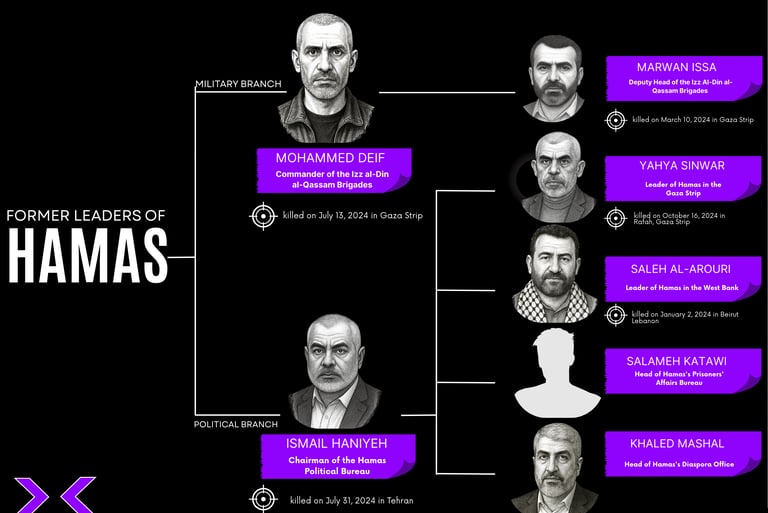Sheikh Ahmed Yassin
From Prayer to Armed Struggle: The Life of Hamas' Founder
7/21/20253 min read


A Broken Childhood, a Forged Destiny
Ahmed Ismail Yassin was born in 1936 in the village of Al-Jura, near Ashkelon. At the time, Palestine was under British Mandate. He was only 12 when the Nakba struck in 1948. His village homes were burned, and his family—like thousands of others—was forced into exile. They resettled in Gaza, where he grew up in refugee camps.
At age 15, a football accident at school damaged his spine, leaving him permanently paralyzed. He would spend the rest of his life in a wheelchair, also suffering from partial blindness and hearing loss.
A gifted student and deeply passionate about religious texts, Yassin studied Islamic theology and became a teacher. He devoted himself to preaching in Gaza’s mosques. In the 1970s, he founded an Islamic charity organization—one that would later become the foundation for the creation of Hamas.
The Rise of a Religious and Political Leader
In 1987, with the outbreak of the First Intifada, Sheikh Yassin officially announced the creation of Hamas (Harakat al-Muqawama al-Islamiyya)—an armed Islamist movement born from the Muslim Brotherhood, with the goal of liberating Palestine and establishing an Islamic state. Unlike Arafat’s secular PLO, Hamas combined religion with armed resistance.
Yassin promoted resistance to Israeli occupation through social work, education—and military operations. Under his leadership, Hamas became a growing force in Gaza, directly opposing the PLO’s diplomatic approach.
In 1989, he was arrested by Israel and sentenced to life in prison for incitement and organizing attacks on Israeli targets. But in 1997, after a failed assassination attempt on Khaled Meshaal by Mossad agents in Jordan, Israel agreed to release Yassin in a prisoner exchange. He was welcomed back to Gaza as a hero.

Rejecting Oslo and Escalating the Conflict
Sheikh Yassin fiercely opposed the Oslo Accords signed by Arafat and Israel in 1993. He saw them as a betrayal of the Palestinian cause and refused to recognize the state of Israel. Under his direction, Hamas launched a wave of suicide attacks in retaliation for Israeli actions—especially following the 1994 Hebron mosque massacre.
As Hamas rose, internal Palestinian divisions deepened. While the Palestinian Authority attempted to uphold a fragile peace process, Hamas, under Yassin, took a more radical stance: occupation, he argued, could only be confronted with armed resistance.
To Israel, Yassin became public enemy number one—despite his image as a frail old man in a wheelchair.
le Cheikh Ahmed Yassine in Gaza, 2003

Assassination and Spiritual Legacy
On March 22, 2004, just after dawn, Sheikh Ahmed Yassin was assassinated. As he left the mosque near his home in Gaza's Sabra neighborhood, an Israeli Apache helicopter fired a missile that killed him instantly—along with nine others.
His death sparked a wave of outrage in the Arab and Muslim world. Protests erupted across the Palestinian territories. Hamas vowed revenge for the killing of its spiritual leader.
Israel justified the assassination as a preemptive measure: Yassin was accused of orchestrating dozens of deadly attacks on Israeli civilians. The operation was ordered by then-Prime Minister Ariel Sharon, who was already responsible for besieging Arafat in Ramallah and hardening Israeli security policy.
Yet, Yassin’s killing only amplified Hamas’ symbolic power. In 2006, the movement won the Palestinian legislative elections—an electoral shock that led to political rupture and open conflict with Fatah.
Legacy and Controversy
Sheikh Ahmed Yassin remains a polarizing figure. To his supporters, he symbolizes faith, courage, and unwavering commitment to the struggle—despite his physical limitations. He is seen as a defender of the poor and oppressed. To his detractors, especially in the West and Israel, he is remembered as the founder of a terrorist organization responsible for civilian deaths.
Twenty years after his death, Sheikh Yassin is still revered in many Palestinian communities. His face—framed by a white turban, marked by paralysis—remains a powerful symbol of defiance under occupation, but also a stark reminder of the deep ideological rift between Islamist and secular Palestinian factions.
SheiSheikh Ahmed Yassin offering condolences to Yasser Arafat in Gaza on August 27, 2001, following the Israeli assassination of PFLP leader Abu Ali Mustafa—a rare moment of unity between rival factions.


